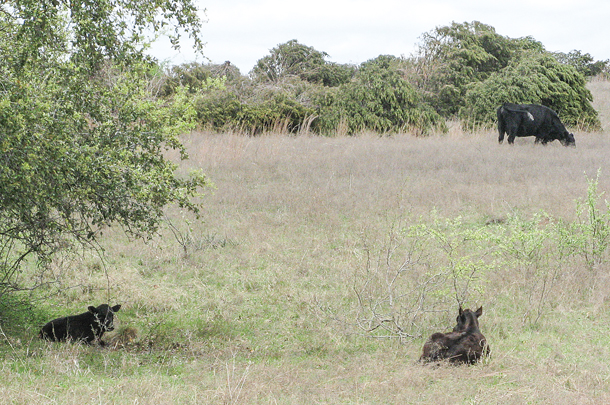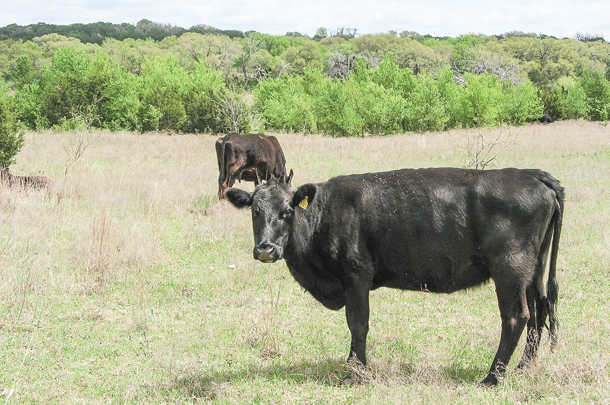Why is this happening? There are several reasons, including failure to detect infected cattle, lack of a prevention plan and failure of cow-calf producers to recognize the importance of BVDV control.
Failure of detection
“The most likely outcome of BVDV exposure is unapparent infection,” says Larry Kerr, DVM, University of Tennessee Extension.
“These animals show no outward signs of the disease but undergo a period for as long as two weeks of reduced ability to develop immunity and the capability of spreading the virus to other susceptible animals. The most likely symptoms of BVDV infection in the beef herd are reproductive failure. When a susceptible pregnant cow is newly infected with BVDV, one of the following things happen:
- Infertility and repeat breeding, decreased pregnancy rate, abortion or stillbirth
- The birth of a persistently infected (PI) calf
- The birth of a calf with a defective nervous system or a calf that may appear normal but is more likely to get sick and have lower fertility (Calves with affected nervous systems are usually unable to stand or have eye problems.)
“Other signs of BVDV infection in cattle, mostly young animals, include pneumonia, diarrhea, mouth ulcers and lameness. These symptoms are common in BVDV-infected stockers and feeders.”
“A virus propagates in one of two ways; ‘hit and run’ (transient infections) or ‘infect and persist,” says Tom Hairgrove, DVM, Texas A&M AgriLife Extension Service. “An animal transiently infected with BVD usually either recovers or dies, so they are only passing the virus for a short time."
"This transient condition is similar to a human with the flu. If the infected animal passes the BVD virus along to another animal before it recovers or dies, the virus survives; if not, the virus dies. Animals that pass the virus for a short time are said to be transiently infected, or temporarily infected.
“BVDV also behaves in the ‘infect and persist’ mode because it can be passed from cows to their unborn calves. If the fetus is infected prior to 125 days of pregnancy, it does not recognize the virus as being foreign, and if these calves survive, they will remain infected and shed the virus throughout their lifetime."
"These life-long shedders are persistently infected (PI), and they are a threat to all cattle in which they come in contact. Most importantly, they are a source of virus that may infect pregnant cattle and produce more PI calves. Understanding BVDV persistence is essential to designing an adequate disease control program.”
Lack of a prevention plan
“Herds are more effectively kept free of BVDV when a prevention plan, designed with help of a local large-animal veterinarian, is implemented,” says John Wenzel, DVM, New Mexico State University.
“Three major principles that should be included in a BVDV prevention plan include enhancing immunity, preventing exposure to at-risk animals and eliminating PI carriers from the herd."
"Protecting the fetus from infection may be the most effective means of battling BVDV and PI in the cow herd. The goal is to prevent fetal infection and enhance immunity from the cow to the calf through the colostrum."
“The most common recommendations to induce fetal protection against BVDV infection involve the use of modified live virus (MLV) vaccines that have a fetal protection claim and include protection from type 1 and type 2 BVDV."

"These vaccines have proven to be the most effective if administered four to eight weeks prior to the beginning of the breeding season. Open replacement heifers should receive three doses of MLV between branding and the beginning of the breeding season to ensure active immunity.”
“Preventing exposure to at-risk animals is an essential component in a BVDV prevention plan,” Wenzel continues. “All newly purchased cattle, including pregnant cows/heifers, replacement heifers and bulls should be quarantined and tested prior to exposure to the resident cow herd or penmates."
"Many tests exist to identify PI cattle; however, skin samples taken from ear notches and analyzed by a diagnostic laboratory are commonly utilized. There is no known maternal interference with the skin test, so calves can be tested within the first week of life. Upon collection, individually identify samples and keep cool or frozen until they are submitted to an accredited laboratory for analysis.”
“There is no test for a single sample that can reliably confirm persistent infection,” says Julia Ridpath, Ph.D., USDA – Agricultural Research Service (USDA-ARS). “Persistent infection can only be confirmed when two samples taken at least two weeks apart (preferably a longer period) both test positive.”
“Calves or adults that are negative to PI testing will remain so all of their life,” Wenzel adds. “Conversely, an animal that is a PI will remain so for its lifetime, constantly shedding the virus in body secretions.
“High-risk herds (open herds with no vaccination program) should undergo the most stringent screening program to identify and eliminate PIs,” says Wenzel. “I recommend initially testing all cattle for the presence of PI before breeding season in high-risk herds."
"Cattle that test positive for BVDV should be sold for slaughter, isolated away from other cattle for the remainder of their life or euthanized. Beef from BVDV-infected cattle is safe for human consumption. It is highly recommended that producers evaluate suspected calf deaths for the presence of BVDV.”
Failure to recognize the importance of BVDV control
“Strategies for controlling BVDV should preferably be concentrated at the cow-calf stage of production to prevent PIs from moving further up the production chain infecting other animals,” says Dale Grotelueschen, DVM, University of Nebraska – Lincoln. “Focus control programs on prevention through biosecurity and biocontainment."
"Biosecurity keeps the herd from disease exposure whereas biocontainment prevents the disease from spreading in the herd. Ways to rid cattle of BVDV are to design and implement a plan to control the disease in the herd (biocontainment) that includes elimination of PIs, reducing host susceptibility with vaccination and keeping the disease from re-entering the herd (biosecurity).”
Cow-calf producers should be concerned about BVDV because it reduces their profits as well as that of their customers. It is believed that about 50 percent of PI calves survive past their first year of life.

In a published research study, cows had 5 percent lower pregnancy rates when herds contained PI calves. Besides reducing monetary losses, BVDV control has intangible benefits such as increased level of animal stewardship, decreased health risk in cattle populations and prevention of PIs.
“A BVDV screening and prevention program should be adequate to meet needs of individual operations,” concludes Wenzel. “If there is no herd history of BVDV, the most common-sense approach entails implementing an effective vaccination program and testing only new cattle."
"Conversely, if BVDV is suspected or has a history on the operation, a more aggressive screening protocol may be necessary to reduce the prevalence of BVDV and PI animals. Contact your local veterinarian for assistance in developing a BVDV prevention program for your herd.” ![]()
Robert Fears is a freelance writer based in Texas.
PHOTO 1: In addition to tissue samples from ear notches, blood drawn from beneath the tail and other locations can be used for BVDV testing.
PHOTO 2: PI cattle will shed the BVDV virus their entire lives.
PHOTO 3: The most likely symptoms of BVDV infection in the beef herd are reproductive failure. Photos courtesy of Robert Fears.








